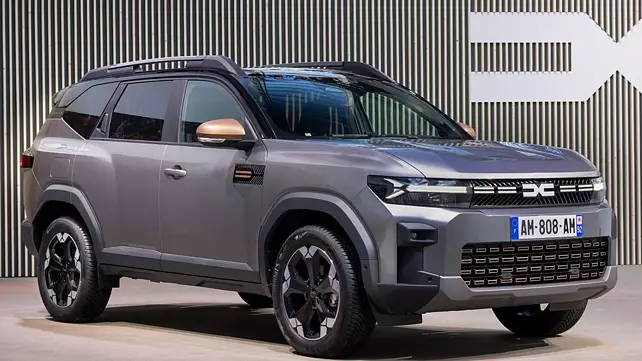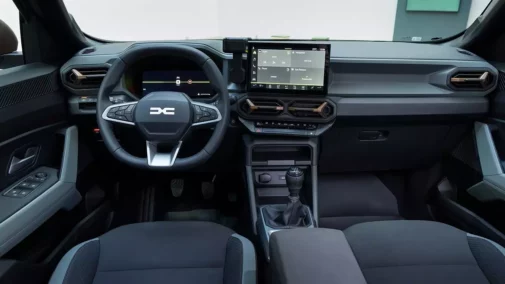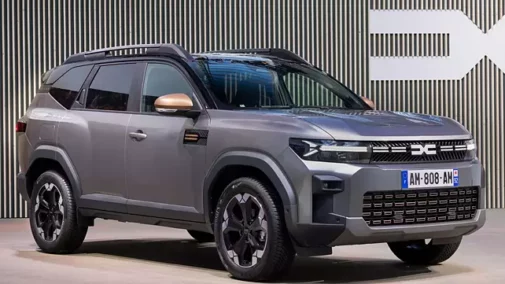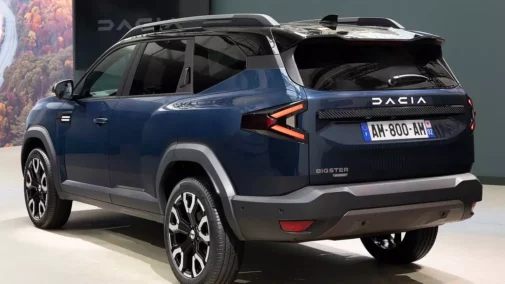The seven-seat version of the Dacia (Renault) Duster, known as the Bigster, has made its global debut, sparking excitement among SUV enthusiasts. And for Indian fans, there’s good news: the Bigster is set to arrive in 2025, alongside the new-generation five-seat Duster. Renault aims to expand its SUV lineup in India, and the Bigster is set to be a key player in the mid-size SUV market, offering more space, rugged looks, and enhanced capabilities.
In terms of design, the Bigster shares a lot of its DNA with the two-row Duster, but it definitely takes things up a notch. It features striking Y-shaped LED daytime running lights (DRLs) and taillights, giving it a sharp, modern appearance. The SUV also boasts muscular, chunky wheel arches, further adding to its rugged appeal, while the body cladding and redesigned front and rear bumpers make it look ready for both urban streets and off-road trails. Functional roof rails give it that adventure-ready vibe, ideal for hauling everything from kayaks to camping gear. A unique design feature is the rear door handles, which are neatly integrated into the C-pillar, offering a seamless and sleek side profile.
Step inside the Bigster, and you’ll notice that its cabin is very similar to the Duster’s but with a touch of added sophistication. The new dashboard layout is clean and modern, complemented by a floating 10.1-inch touchscreen infotainment system that supports wireless Android Auto and Apple CarPlay for seamless connectivity. The 10-inch digital instrument cluster adds to the futuristic feel, offering easy access to all driving information at a glance. There’s also a wireless charger to keep your devices juiced up on the go, automatic climate control for added comfort, and a panoramic sunroof to brighten up the interior and offer a sense of spaciousness.
While the Bigster shares its basic design with the Duster, the seven-seat layout is the real highlight, providing more practicality for larger families or those who need extra space for passengers and cargo. The seat upholstery and materials inside are designed to elevate the overall cabin experience, making it feel both premium and functional.
Internationally, the Bigster comes with three powertrain options, but Renault has tailored the engine lineup for the Indian market. Both the Duster and the Bigster will be offered with two engine choices: a 1.6-litre petrol-hybrid and a 1.2-litre petrol engine. The hybrid option is expected to appeal to those looking for greater fuel efficiency, while the 1.2-litre petrol engine promises a balance of performance and economy for everyday driving.
For those craving off-road capability, Renault could equip the top-spec variants with a 4×4 drivetrain, making the Bigster a versatile SUV that’s as comfortable on city streets as it is on rugged terrains. This would make the Bigster one of the few options in its segment to offer all-wheel drive, giving it a distinct edge over rivals.
With its bold design, spacious cabin, and competitive powertrain options, the Bigster is expected to make a strong impact in India’s growing mid-size SUV segment. It’s aimed at customers who want the toughness and capability of a traditional SUV, but with more space and modern features. Renault is clearly positioning the Bigster as a go-to option for families and adventure-seekers alike.
When it debuts in 2025, the Bigster will not only offer the flexibility of a seven-seat configuration but will also cater to the growing demand for hybrid and petrol-powered SUVs in India. The added option of 4×4 could make it a favorite for those who want a vehicle that can handle both urban commutes and off-road getaways.
All in all, the Renault Bigster promises to be a significant addition to the Indian SUV landscape, offering a blend of rugged design, practicality, and modern tech that’s bound to appeal to a wide range of buyers.



















